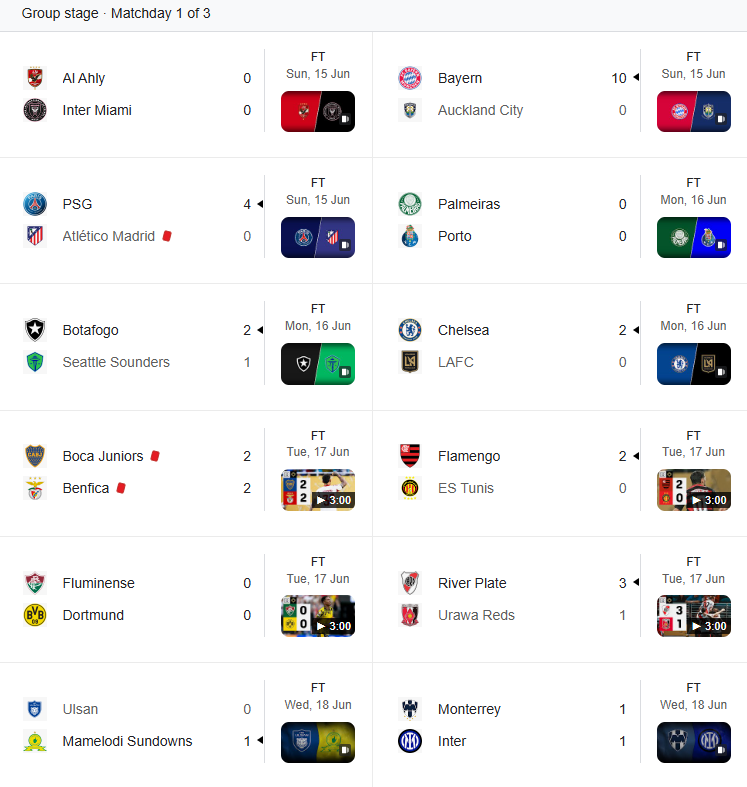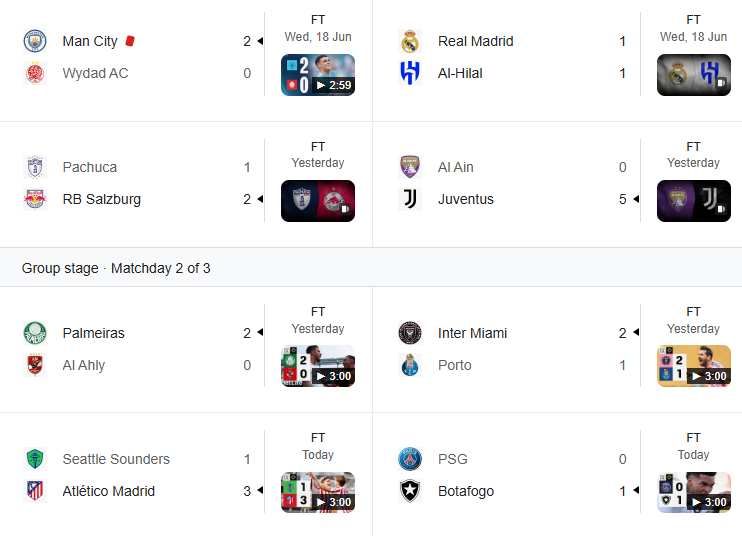FIFA Club World Cup 2025: All you need to know
The 2025 FIFA Club World Cup marks an important evolution in international club football, being the 21st edition and the first under an expanded format, hosted in the United States. This tournament brings together 32 of the world’s top club teams, competing across multiple groups before advancing to a knockout stage, making it the most comprehensive Club World Cup to date. In this article will delve into the overview, format, venues, prize money, 2025 results, matches, table, schedule and importance of the tournament, highlighting its future significance in the football world.
Results Group Stage
Overview
The 2025 edition features a total of 63 matches held in various venues across the USA, showcasing elite clubs from different continents. The format includes a group stage with eight groups (A to H), each consisting of 4 teams. The top two teams from each group advance to a direct single-match knockout stage starting from the round of 16, culminating in the final without a third-place playoff.
This expanded format allows for more clubs and players to participate, increasing the tournament’s competitiveness and global appeal. It also provides fans a unique opportunity to see top players from different leagues and continents face off, including stars like Lionel Messi, Kylian Mbappé, and Erling Haaland.
Tournament Structure and Group Overview
- Format: 32 teams, 8 groups of 4. Top two from each group advance to the knockout stage.
- Diversity: Teams from 20 countries, with Brazil the best-represented (four clubs), and a significant presence from Europe, South America, and beyond.
- Player Pool: Over 1,000 players, including more than 350 internationals, highlighting the tournament’s global reach

FIFA Club World Cup 2025 Groups
Here is a list of the 8 groups:
- Group A: Palmeiras, Porto, Al Ahly, Inter Miami
- Group B: Paris Saint-Germain, Atletico Madrid, Botafogo, Seattle Sounders
- Group C: Bayern Munich, Auckland City, Boca Juniors, Benfica
- Group D: Flamengo, ES Tunis, Chelsea, LAFC
- Group E: River Plate, Urawa Red Diamonds, Monterrey, Inter Milan
- Group F: Fluminense, Borussia Dortmund, Ulsan HD FC, Mamelodi Sundowns
- Group G: Manchester City, Wydad, Al Ain, Juventus
- Group H: Real Madrid, Al Hilal, Pachuca, FC Salzburg

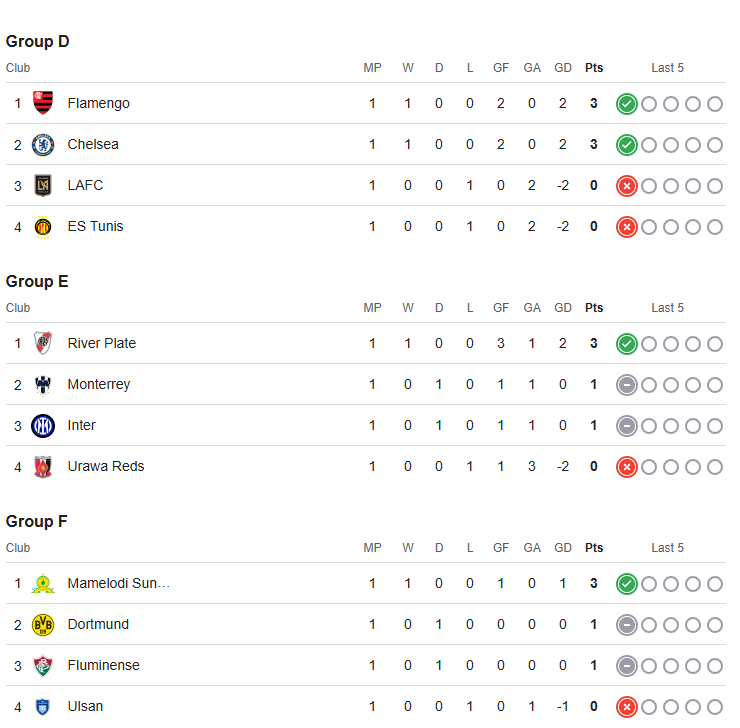
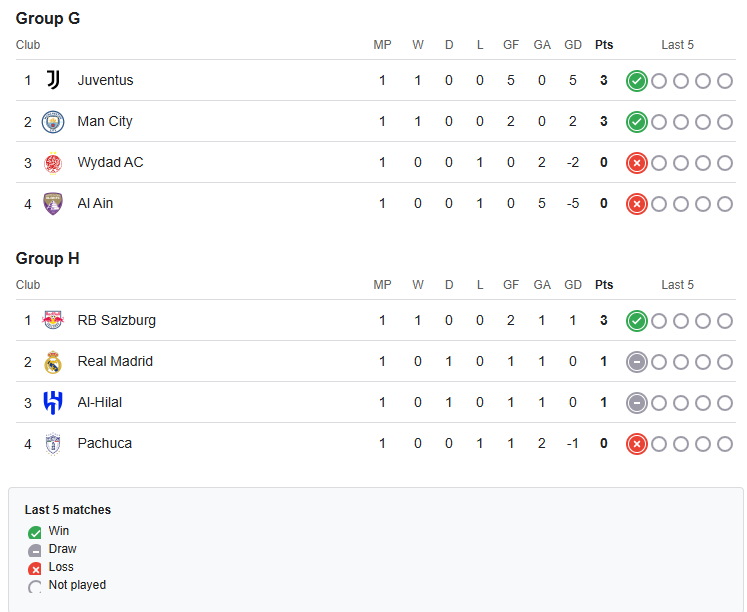
Where will be hosted FIFA Club World Cup 2025 ?
The FIFA Club World Cup 2025 will be hosted by the United States, one of the co-hosts of the FIFA World Cup 2026.
FIFA Club World Cup 2025 Schedule
The FIFA Club World Cup 2025 kicks off in the United States on Saturday 14 June until July 13, with 32 teams craving for the title & prize money in the new-look expanded intercontinental club competition.
- Group stage: June 14 to 26
- Round of 16: June 28 to July 1
- Quarterfinals: July 4 and 5
- Semifinals: July 8 and 9
- Final: July 13
How does the new Club World Cup work?
From the beginning, the Club World Cup was created with no more than eight teams, however, the 2025 edition is totally different.
This year’s edition on US will be the first in the tournament’s 24-year history to feature 32 clubs – the same number of teams as recent FIFA World Cups including the winners of the 4 previous continental championships.
The group stage is crucial as it determines the 16 teams that move forward to the knockout rounds. Each group features a mix of clubs from Europe, South America, North America, Asia, Africa, and Oceania, reflecting the global nature of the competition.
The teams will be divided into 8 groups of four competing in a group stage with the top 2 clubs from each group advancing to the knockouts, which begin with the round of 16 and end with the final.
Knockout Stage
The knockout stage is a straight elimination format starting from the round of 16. Each match is a single game, increasing the stakes and intensity. The absence of a third-place playoff means every match directly impacts progression or elimination.
The knockout bracket features the top two teams from each group, setting up potential high-profile clashes between clubs from different continents and leagues. This stage tests teams’ tactical adaptability and resilience under pressure.
Which teams will participate in the Club World Cup?
Football fans in the US will have the chance to follow some of the most popular clubs, including last season’s UEFA Champions League winners Real Madrid, Bundesliga legends Bayern Munich, 10-time English champions Man City and Italian Inter Milan with their new coach Cristian Chivu.
Qualified teams were determined by the winners of the continental club competitions, such as the Champions League, and the confederation’s four-year rankings.
Outside of Europe, Lionel Messi’s Inter Miami is also part of the tournament, having polemically earned a spot as a representative of the host nation. Inter Miami won the Supporters’ Shield, handed to the team with the best regular-season record.
Of the 32 clubs, Europe (UEFA) is the best-represented confederation with 12 teams, followed by South America (CONMEBOL) with six. Asia (AFC), Africa (AFC) and North, Central America and the Caribbean (CONCACAF) have four teams each.
Oceania is represented by one club, while the final slot has been allocated to the host nation’s representative, Inter Miami.
Mexican club Leon had qualified by winning the CONCACAF Champions Cup in 2023, but were removed by FIFA due to an ownership rule breach. FIFA said that Club Leon and another Mexican club in the tournament, Pachuca, did not meet regulations on multi-club ownership. Pachuca’s spot in the competition was unaffected.
After the Court of Arbitration for Sport rejected Leon’s appeal, FIFA confirmed a playoff between Los Angeles FC and Mexican side Club America that was won by LAFC.
Why are Chelsea, Inter Miami in, and Barcelona, Liverpool out of the FIFA Club World Cup?
FIFA rules for the Club World Cup state that only two teams from each country can play in the tournament, and European clubs’ participation was decided by their performances in the Champions League over the last four seasons.
Man City (2023) and Chelsea (2021) won the Champions League during that four-year window, taking up the two spots.
Other popular clubs such as Napoli, AC Milan, Barcelona, RB Leipzig and Sevilla also missed out due to UEFA’s four-year club coefficient rankings and two-team restrictions.
Where are the Club World Cup venues?
The 63 matches will be played across 12 venues in 11 cities. The opening match, Al Ahly vs Inter Miami, will be played at the Hard Rock Stadium in Miami, which has a spectator capacity of 65,000.
The MetLife Stadium, which serves as the home for the New York Giants and New York Jets of the National Football League (NFL), will host both the semifinals and the final. MetLife is an 82,500-seat venue and was also chosen as the venue of the 2026 FIFA World Cup final.
Pasadena’s Rose Bowl, best known as a college American football venue, is the biggest stadium with a capacity of 88,500. It is no stranger to hosting big events: the Rose Bowl was the site for the football gold medal match at the Los Angeles Games in 1984, as well as the men’s World Cup final a decade later. It will also be a venue for the Olympic Games Los Angeles 2028.
Here’s the full list of venues:
- MetLife Stadium (East Rutherford, New Jersey)
- Hard Rock Stadium (Miami, Florida)
- Mercedes-Benz Stadium (Atlanta, Georgia)
- Lumen Field (Seattle, Washington)
- Bank of America Stadium (Charlotte, North Carolina)
- TQL Stadium (Cincinnati, Ohio)
- Rose Bowl Stadium (Los Angeles, California)
- GEODIS Park (Nashville, Tennessee)
- Camping World Stadium (Orlando, Florida)
- Inter&Co Stadium (Orlando, Florida)
- Lincoln Financial Field (Philadelphia, Pennsylvania)
- Audi Field (Washington, DC)
Players to Watch
The 2025 FIFA Club World Cup features a blend of legendary figures and rising stars:
- Lionel Messi (Inter Miami) continues to be a major draw, bringing experience and creativity.
- Kylian Mbappé (Paris Saint-Germain) is expected to be a key attacking threat.
- Erling Haaland (Manchester City) offers goal-scoring prowess and physical presence.
- Emerging talents like Estevao and others from various continents add excitement and unpredictability to the tournament.
These players not only contribute to their teams’ success but also elevate the tournament’s profile globally.
Will Messi and Ronaldo play in the FIFA Club World Cup?
Messi will, thanks to Inter Miami’s surprise qualification.
Messi’s club found a place as the club with the most points in Major League Soccer’s (MLS) regular season, instead of LA Galaxy, who won the MLS Cup, which is regarded as the highest prize in the MLS.
FIFA announced Miami’s addition to the Club World Cup in October after they broke MLS’s regular-season points record with a 6-2 win over New England Revolution to reach 74 points. New England had set the previous record in 2021 with 73 points.
Meanwhile, Ronaldo and his Saudi Arabian club Al Nassr did not qualify for the tournament, but it didn’t stop FIFA President Gianni Infantino from suggesting that the Portugal star could switch to one of the teams participating in the tournament.
“Cristiano Ronaldo might play in the Club World Cup,” Infantino told online streamer IShowSpeed in late May. “There are discussions with some clubs, so if any club is watching and is interested in hiring Ronaldo for the Club World Cup, who knows? Still, a few weeks’ time, will be fun.”
However, Ronaldo cleared his position by saying, “You can’t take part in everything.”
“You have to think about the short, medium and long term. It’s a decision practically made on my part not to go to the Club World Cup, but I’ve had quite a few invitations to go.”
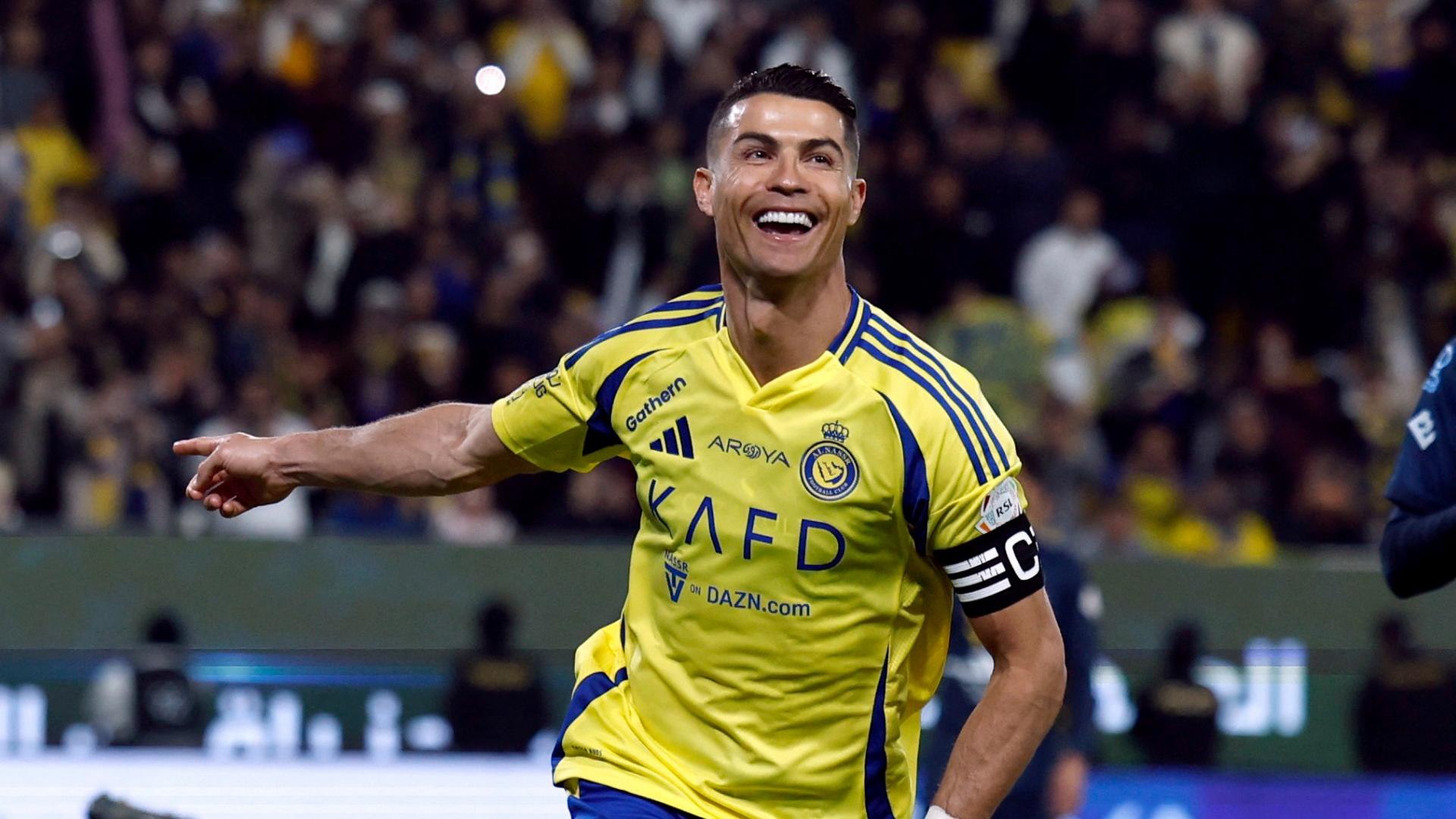
How much prize money teams can get at the Football Club World Cup?
The total prize money for the 2025 FIFA Club World Cup will be fabulous $1 billion. The prize money will be split between a sporting performance pillar and a participation pillar with the champions earning up to $125m.
About half of the $1bn will be divided between the 32 clubs, with the amount per club based on sporting and commercial criteria. It means that clubs such as Manchester City and Real Madrid will receive a greater percentage than smaller clubs in a model FIFA developed with the European Club Association.
A further $475m will be awarded on a performance-related basis. Hence, the team with the most wins over a potential seven matches will earn more cash, with a maximum pot of $125m available.
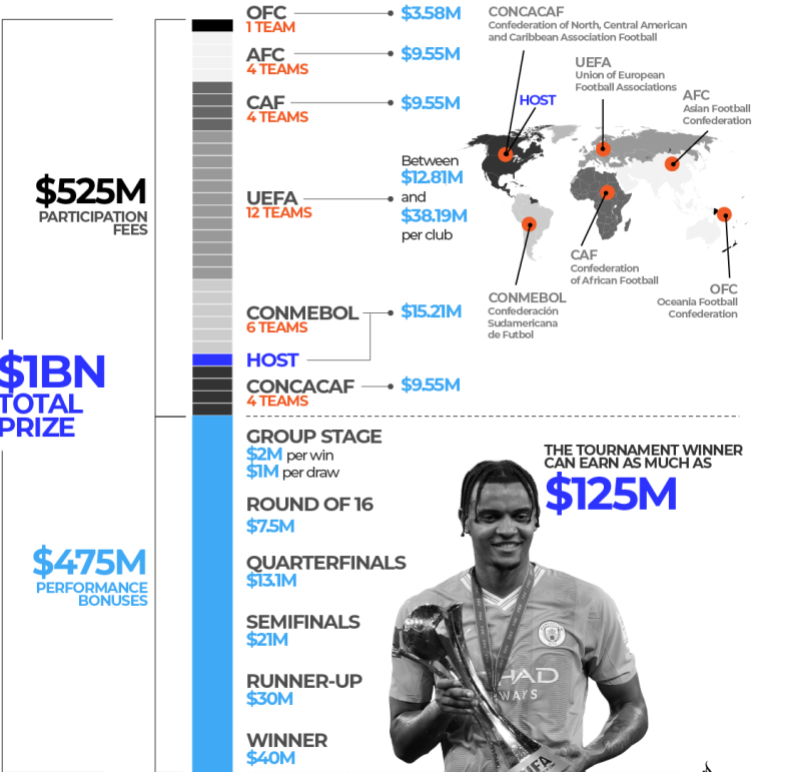
Analysis of Key Teams at FIFA Club World Cup 2025
The 2025 FIFA Club World Cup marks a historic expansion to 32 teams, bringing together elite clubs from every continent for a month-long tournament in the United States. Below is an analysis of some of the key teams, their strengths, and expectations for the tournament.
Manchester City (England)
- Status: Defending champions, having won the 2023 edition.
- Strengths: Deep squad, tactical flexibility, and recent Champions League pedigree.
- Key Players: Several new signings are set to make their debuts, adding to an already star-studded roster.
- Expectations: As reigning champions and Premier League powerhouses, City are among the favorites to win the tournament again.
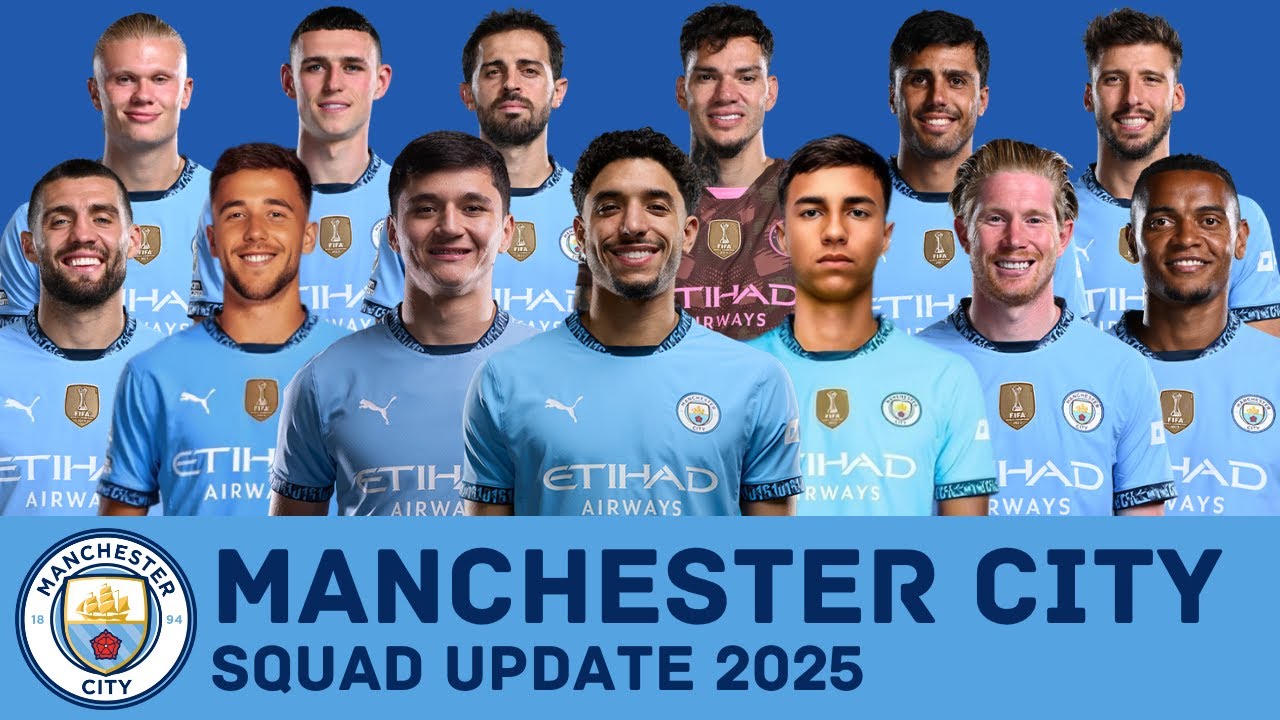
Real Madrid (Spain)
- Status: European giants with a record of success in international club competitions.
- Strengths: Blend of experienced stars and emerging talents, with new faces like Huijsen and Trent under new manager Xabi Alonso.
- Key Players: Veteran leaders and dynamic young players make Madrid a formidable contender.
- Expectations: Always among the favorites, Madrid’s squad depth and winning mentality are major assets.
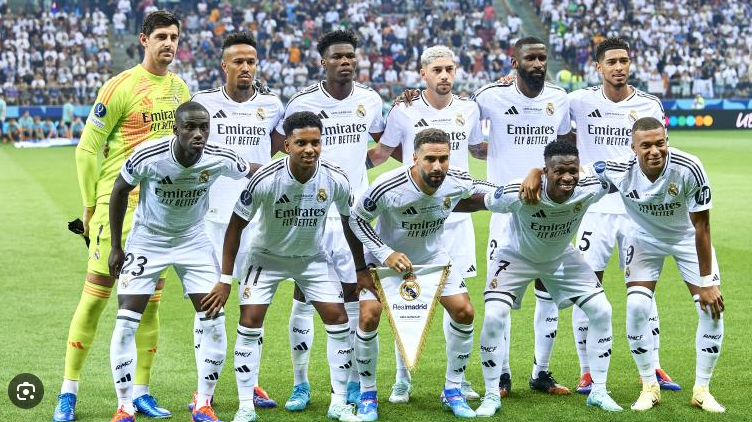
Bayern Munich (Germany)
- Status: Bundesliga champions and regular Champions League contenders.
- Strengths: Strong squad led by experienced players like Thomas Müller; tactical acumen under Vincent Kompany.
- Key Players: Müller, new signings, and a deep midfield.
- Expectations: Expected to win their group and progress deep into the tournament, with a potential quarterfinal clash against PSG or Atletico Madrid as their first big test.
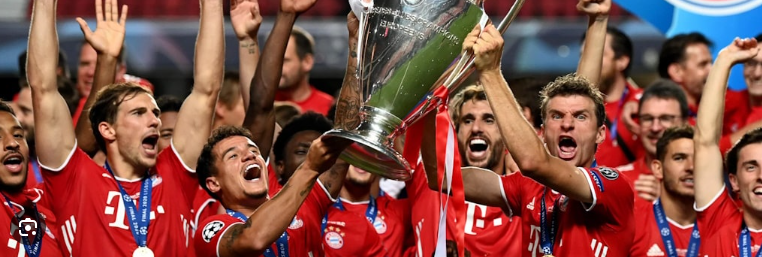
Chelsea (England)
- Status: Champions League winners in recent years, representing the Premier League.
- Strengths: Young talent blended with experienced internationals; Delap is a player to watch.
- Key Players: Delap and a host of emerging talents.
- Expectations: Group favorites, but squad rotation may be a concern as the tournament progresses.
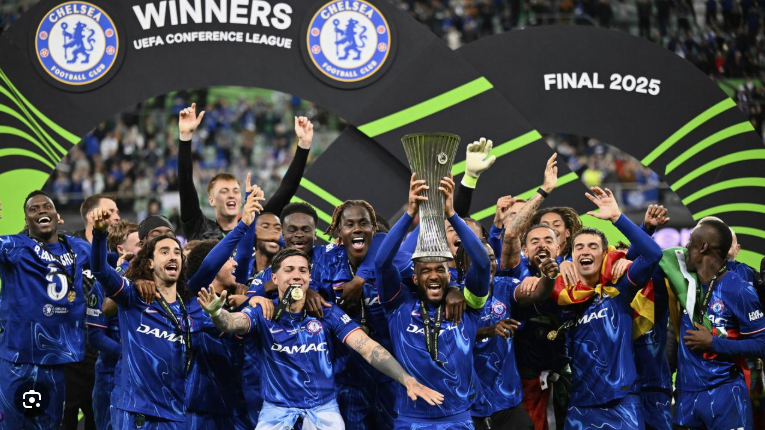
Flamengo (Brazil)
- Status: South American powerhouse, Copa Libertadores winners.
- Strengths: Deep squad, attacking talent, and a winning culture.
- Key Players: De Arrascaeta stands out; Pedro returns from injury to lead the attack; Jorginho adds midfield control.
- Expectations: High ambitions, with fans and club culture demanding a run to the final stages.

Paris Saint-Germain (France)
- Status: Ligue 1 champions, regular Champions League participants.
- Strengths: Star-studded squad with global appeal.
- Key Players: Not specified, but typically feature world-class forwards and midfielders.
- Expectations: Group favorites, but must overcome tough matches against Atletico Madrid and Botafogo.
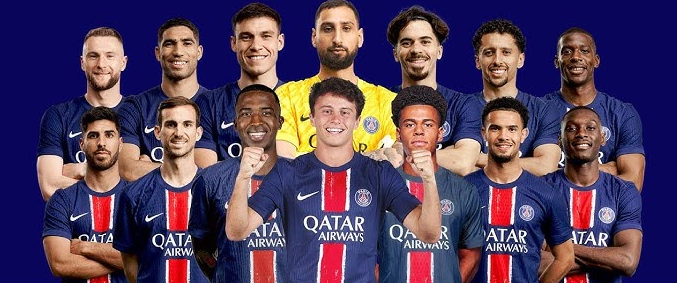
River Plate (Argentina)
- Status: Copa Libertadores regulars and South American giants.
- Strengths: Strong youth development and tactical discipline.
- Key Players: Young midfielder Mastantuono, who is Madrid-bound, is a player to watch.
- Expectations: Expected to advance from their group, with the potential to upset European opposition.

Inter Miami (USA)
- Status: MLS representatives, featuring global icons.
- Strengths: High-profile signings and significant fan engagement.
- Key Players: Not specified, but likely to include global stars.
- Expectations: Will draw attention as hosts but face a challenging group with Palmeiras and Porto.
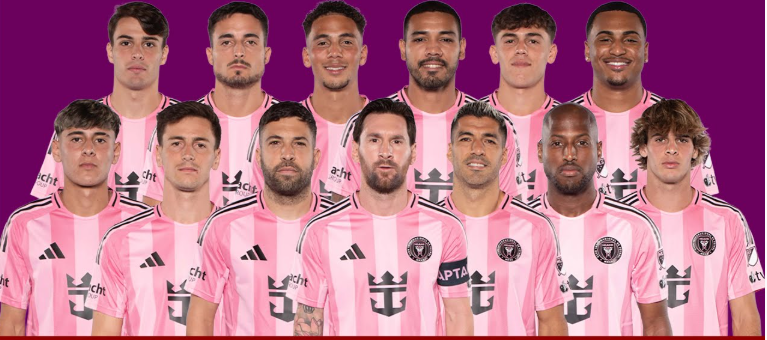
Juventus (Italy): Featuring promising talents like Cambiaso and Yildiz, but squad rotation could be an issue.
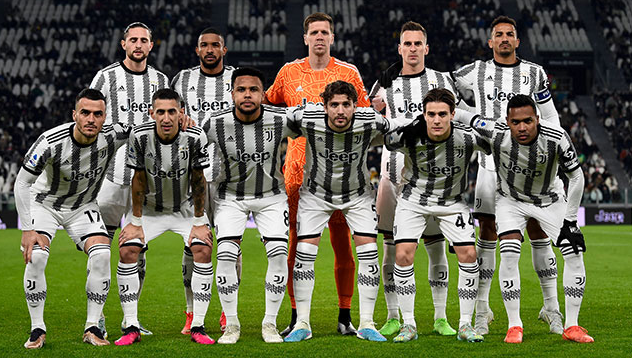
Atletico Madrid (Spain): Always competitive, especially in knockout formats.

Borussia Dortmund (Germany): In good form under coach Kovac, favorites in their group.
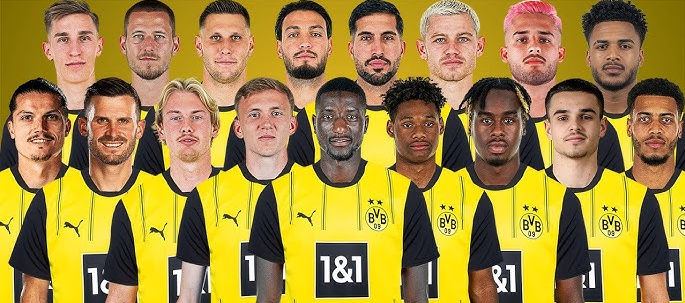
Al Hilal (Saudi Arabia): Mitrovic and Cancelo headline a star-studded squad, could surprise in later rounds.
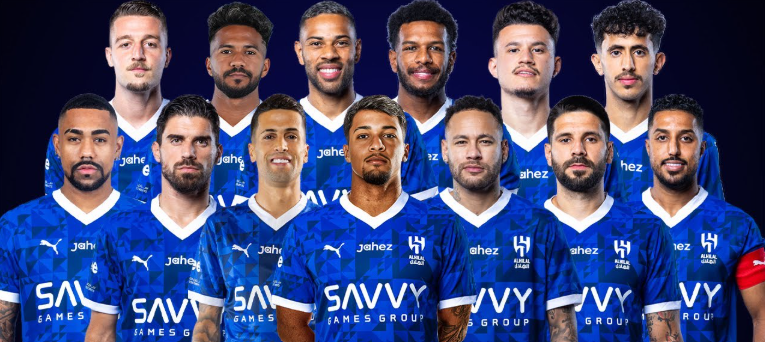
Conclusion
The 2025 FIFA Club World Cup represents a landmark in club football with its expanded format, diverse participation, and high-quality matches. The group stages have set the stage for an intense knockout phase, with several clubs demonstrating strong performances. Fans worldwide are treated to a showcase of football excellence, featuring some of the best teams and players in the world. This tournament not only crowns the world’s top club but also fosters cross-continental football rivalry and camaraderie, enriching the global football landscape
